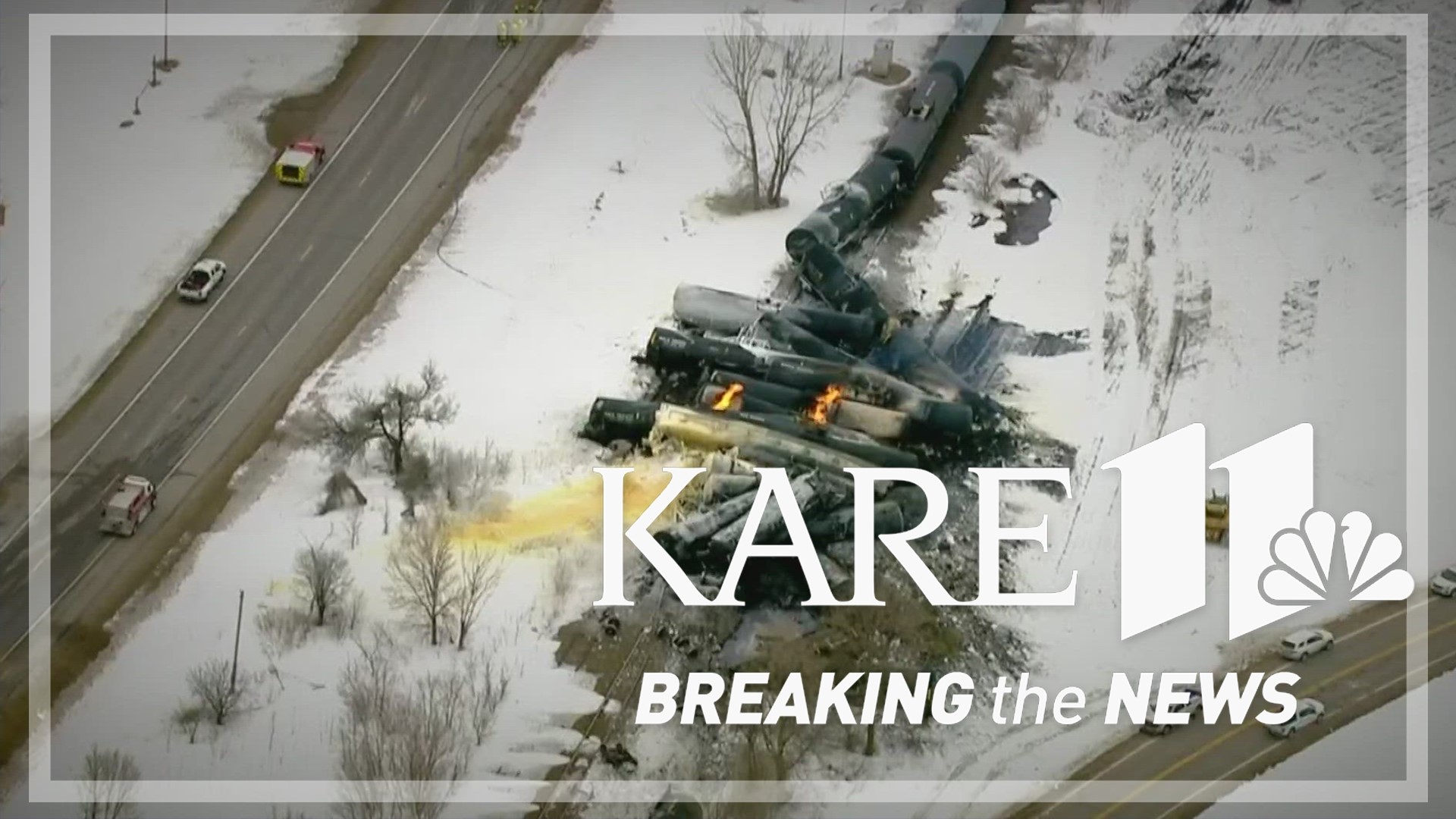MINNEAPOLIS — A train derailment that led to the evacuation of Raymond, Minnesota, is the latest hazardous incident to make headlines across the United States in the last few weeks, and it's spurring more conversation around regulations and safety
Overall, the number of train derailments have declined in Minnesota and across the country over the years. The state averaged about three derailments per month in 2022. Nationally, the average was closer to three per day. The vast majority are small, and do not involve hazardous material spills.
But the decline in derailments also coincides with a decline in miles covered by the industry. Those responsible for maintaining the tracks say they're concerned that other industry declines — from staffing levels to the frequency of inspections — are now putting the system at greater risk of future issues.
"My concern is these communities that these trains pass through," said Tom Steinbrenner, who spent 17 years working on track maintenance for Canadian Pacific Railway and now represents others in the track maintenance workers union (BMWED). "We used to be ahead of track defects. We were able to be out there and we could see them developing and get ahead of them before it actually became a defect. In recent years, we're definitely making the shift toward being on the defensive side of track defects. It feels like we're always chasing and putting out fires."
Three years before the latest hazardous train derailment near Raymond, the union for the employees who maintain that stretch of track for BNSF sent a letter warning of "dire consequences for public safety, specifically in regard to the possibility of a serious train derailment."
WATCH BELOW: Aerials from the scene where a BNSF train derailed and several rail cars started on fire Thursday morning.
The federal investigation into what caused the Raymond derailment is just beginning, but on Thursday, the union echoed it's 2020 warning in a new letter, which also highlighted a specific reduction in rail inspections and inspectors implemented by BNSF in recent years:
"For example, the Raymond, MN, area where this derailment happened used to be inspected seven (7) days a week, but then the inspections dropped to four (4) times per week, and now the inspections have dropped further with only two (2) inspections per week. The roadmaster in the area used to have seven (7) inspectors roll up to him, but now there are only four (4) inspectors."
In response, BNSF issued the following statement to KARE11:
"Track structure integrity is critical to BNSF’s success and we strive for continuous improvement each year. We do regular inspections of our track with manual inspection and highly sophisticated equipment. For example, we utilize geometry cars that measures track geometry including switches. Onboard sensors, including cameras, lasers, radar and machine vision systems, survey the track structure passing beneath to find a variety of flaws, some imperceptible to the human eye. Data generated by the test cars is processed using algorithms and machine learning to analyze hundreds of millions of bytes of data and determine when and where track maintenance is needed. We plan our work in advance and the maintenance is done proactively. As a result, the railroad is the best shape it’s ever been as BMWE is well aware as we just met to review our safety and infrastructure health metrics.
BNSF team members drive our success, and we couldn't deliver the nation's goods without them."
Despite the technological changes, members of Congress, including Minnesota Senator Amy Klobuchar, are working to pass the Railway Safety Act of 2023, which would provide more federal oversight and include a crew size guideline to ensure "No freight train may be operated without a 2-person crew consisting of at least 1 appropriately qualified and certified conductor and 1 appropriately qualified and certified locomotive engineer."
"Just speaking from a maintenance standpoint, having two men in the train is the most reassuring thing we can have as the workers down on the tracks doing the work." Steinbrenner said. "The engineer has enough on their plate just operating the train safely."
Minnesota legislators are also set to take up a bill on Friday focusing on hazardous material derailments. It would require railroads to inform local emergency managers and fire chiefs about what chemicals are involved within 15 minutes.
Though it could prove helpful on those rare occasions, Steinbrenner says the most meaningful changes will take a more pro-active approach.
"To me, it really doesn't matter if it was a hazardous spill or not a hazardous spill because every single one of these tracks does carry hazardous material," he said. "The first thing I think of is, how are they going to repair this, and how can we prevent his from happening again?"

